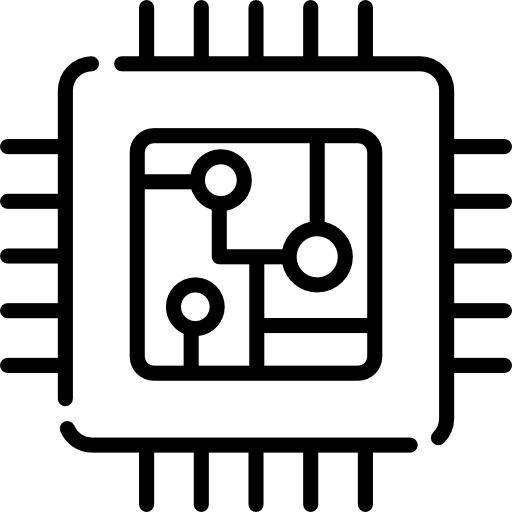Common Stock vs Preferred Stock: Whats the Difference? TIME Stamped
In each case, these categories don’t refer so much to the stocks themselves as to the corporations that issued them. However, a company can choose to amend its articles of incorporation or charter allowing it to increase its capital stock. The money the company will get in exchange for the shares will be recorded in the company’s balance sheet representing an asset. It represents the pool of different shares of stock a company can issue and for how many in total. Raising capital by selling shares (equity investment) is interesting for corporations as they are able to access the capital needed by the business without having debt (debt financing). There are several key advantages in a company’s ability to issue shares from its capital stock.
Common stock offers investors voting rights, which gives them influence in the company. Most stocks you hear about are common stocks, which represent partial ownership in a company and include voting rights. A company’s stock could decline in price because the company’s revenue declines or isn’t being managed well. Or a perfectly well-managed and prosperous company’s stock could fall because lots of investors decide to sell millions of shares of stock of all kinds, or stocks of a certain kind. That’s what happened when the dot-com bubble burst, and it drove the entire market down, without bothering to differentiate the good stocks from the bad. Financial pros also refer to common stock and preferred stock, but, actually, these aren’t types of stock but types of shares.
- If they said «buy 100 stocks,» they’d be referring to a whole panoply of companies—100 different ones, in fact.
- It may be possible in certain instances to convert preferred stock to common stock, but not the other way around.
- This is true during the company’s good times when the company has excess cash and decides to distribute money to investors through dividends.
The number of outstanding shares, which are shares issued to investors, is not necessarily equal to the number of available or authorized shares. Capital stock can be issued by a company to raise capital to grow its business. Issued shares can be bought by investors—who seek price appreciation and dividends—or exchanged for assets, such as equipment needed for operations. Preferred stocks are less volatile and therefore have lower capital loss risk. In the event of insolvency, preferred stockholders have a higher priority to receive payments over common stockholders.
Is capital stock an asset
The warrant entitles the holder to buy a proportionate amount of common stock at a specified price that is usually higher than the market price at the time the warrant is issued. A warrant is usually offered as a «sweetener» to enhance the marketability of accompanying fixed-income securities. Warrants for shares of publicly traded stocks are usually tradeable on exchanges and usually have a life of several years.
- The dividends may be higher than what you’d get with common stocks and depending on the stock, you may have the option to convert your shares.
- Investing in preferred stock from a shaky company is as risky as buying its common stock.
- Once the IPO is complete, the stock becomes available for purchase by the general public on the secondary market.
- Businesses can choose whether or not and how much to pay in dividends to common stockholders.
If you buy a company’s capital stock, it represents your claim on the company’s assets and earnings. In simple terms, shareholders, who own these stocks, become partial owners of the corporation. In some cases, they may even have a say in the company’s decision-making processes through voting rights attached to their shares. Common stock, as its name implies, is one of the most ordinary types of stock. It gives shareholders a stake in the underlying business, as well as voting rights to elect a board of directors and a claim to a portion of the company’s assets and future revenues. However, common stockholders have a lower position than preferred stockholders, who get priority on dividend payments and in recovering their investment if the company is liquidated.
Value of capital stock
The amount of capital stock issued to different people, whether investors or shareholders, decides the percentage of the company that each person owns. For example, if there are 10,000 shares of capital stock and an investor owns 5,000 stocks, he owns 50 percent of the company. Common stock tends to offer higher potential returns, but more volatility.
Types of Common Stocks
If you’re looking for more advice, it may be a good idea to consult a financial advisor. Preferred stock receives preferential treatment, meaning, those stockholders are paid first if there are any assets how to calculate the cash flow margin of a company left to liquidate when a company goes under. Common stockholders are only paid after preferred stockholders are paid. When it comes to voting rights, only investors with common stock have them.
To begin the IPO process, a company works with an underwriting investment bank to determine the type and price of the stock. Once the IPO is complete, the stock becomes available for purchase by the general public on the secondary market. Selling stock and receiving share capital in return is known as equity financing. This type of financing is a popular alternative to debt financing, in which companies obtain capital by seeking loans that must be paid back with interest.
Risks in Stocks
Stocks can be broken down further into classes, typically Class A and Class B. Both have the same right to a company’s profits. This way, the entrepreneurs each own 500,000 shares (50% ownership), and the investors collectively own 1,000,000 shares (50% ownership). Preferred shares can be converted to a fixed number of common shares, but common shares don’t have this benefit. The first common stock ever issued was by the Dutch East India Company in 1602.
It may also be possible to buy preferred stocks from a direct stock plan, a dividend reinvestment plan, or a stock fund. Earning income from common stock is often based on capital appreciation as the value of the stock goes up when the business succeeds. There may be dividends, but they can only be paid out after preferred stock dividends are paid out. Preferred stock is often called a “hybrid security” because its fixed-income dividend behaves like a bond even though it’s an equity investment. It comes with preferential status to other investors, which is where it gets its name. Many companies exclusively issue common stock, and there’s a lot more common stock selling on stock exchanges than preferred stock.
For holders of cumulative preferred stock, any skipped dividend payments accumulate as “dividends in arrears” and must be paid before dividends are issued to common stockholders. Traded on exchanges, common stock can be bought and sold by investors or traders, and common stockholders are entitled to dividends when the company’s board of directors declares them. Share capital refers to the funds a company receives from selling ownership shares to the public. A company that issues 1,000 shares of stock at $50 per share receives $50,000 in share capital.
Capital stock is a foundational concept in the world of corporate finance and investments. It represents the ownership shares in a corporation and serves as a means for companies to raise capital. Understanding the differences between preferred and common stock is essential for investors, as it influences their rights, risks, and potential rewards when investing in a company.
The Dividend Aristocrats, for example, represent the companies that have raised their dividend payout for 25 or more years consecutively. The total number of shares issued less the total number of outstanding shares represents a company’s treasury stock. Unlike outstanding shares issued to shareholders, treasury shares or treasury stock do not grant voting rights or right to dividends. However, when a corporation issues shares from its capital stock, such as common shares, the company produces an asset as it will typically get money in exchange for the shares. «A preferred stock is kind of like a hybrid between a bond, which is a form of debt, and equity, which is a form of ownership,» says Zach Weiss, research analyst for FBB Capital Partners. Typically, shareholders of preferred stock will receive guaranteed fixed dividends.






